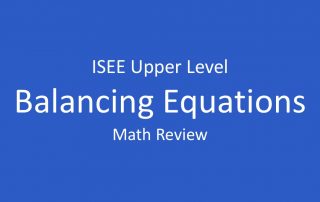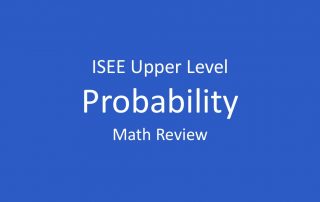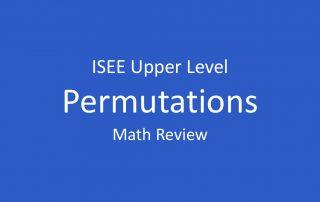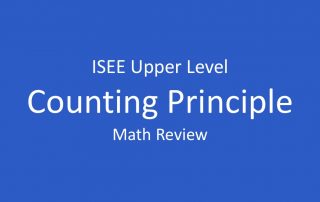ISEE Math Review – Absolute Value
Absolute value, represented as a vertical line on either side of the value, refers to a number or variable’s distance from zero on the number line. There are always two numbers that share the same distance from zero: a positive number and its negative counterpart. The absolute value for a variable will usually result [...]












